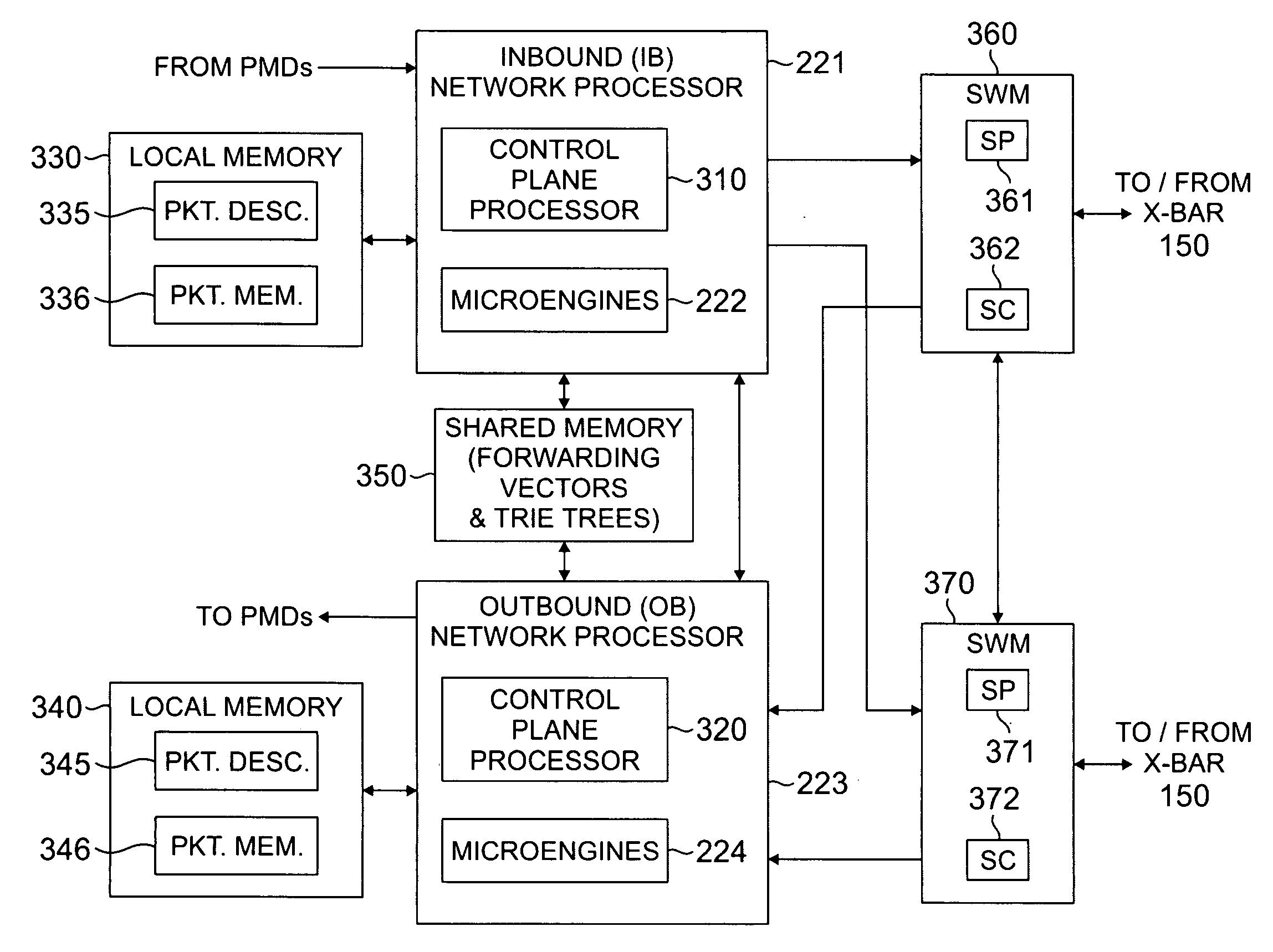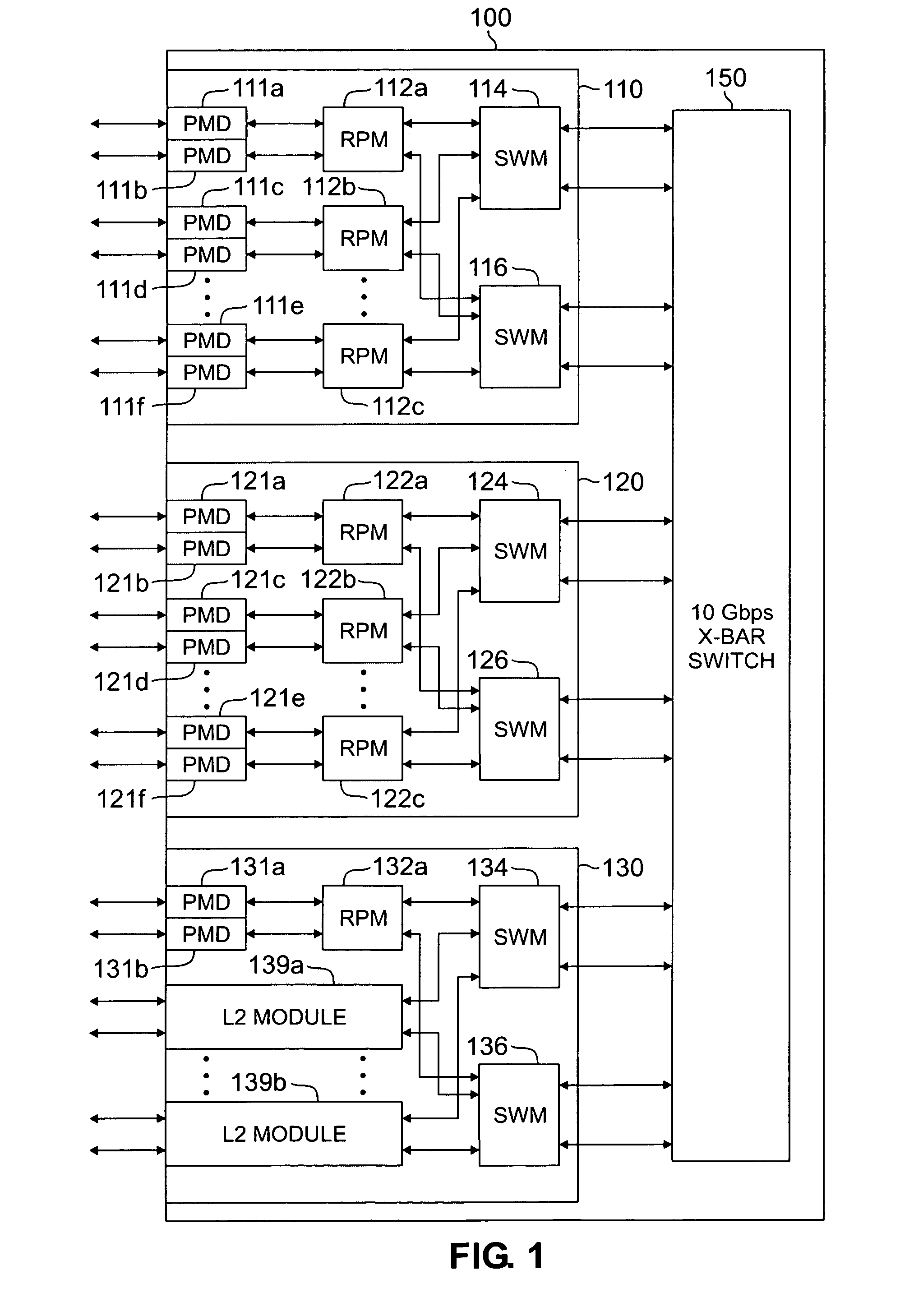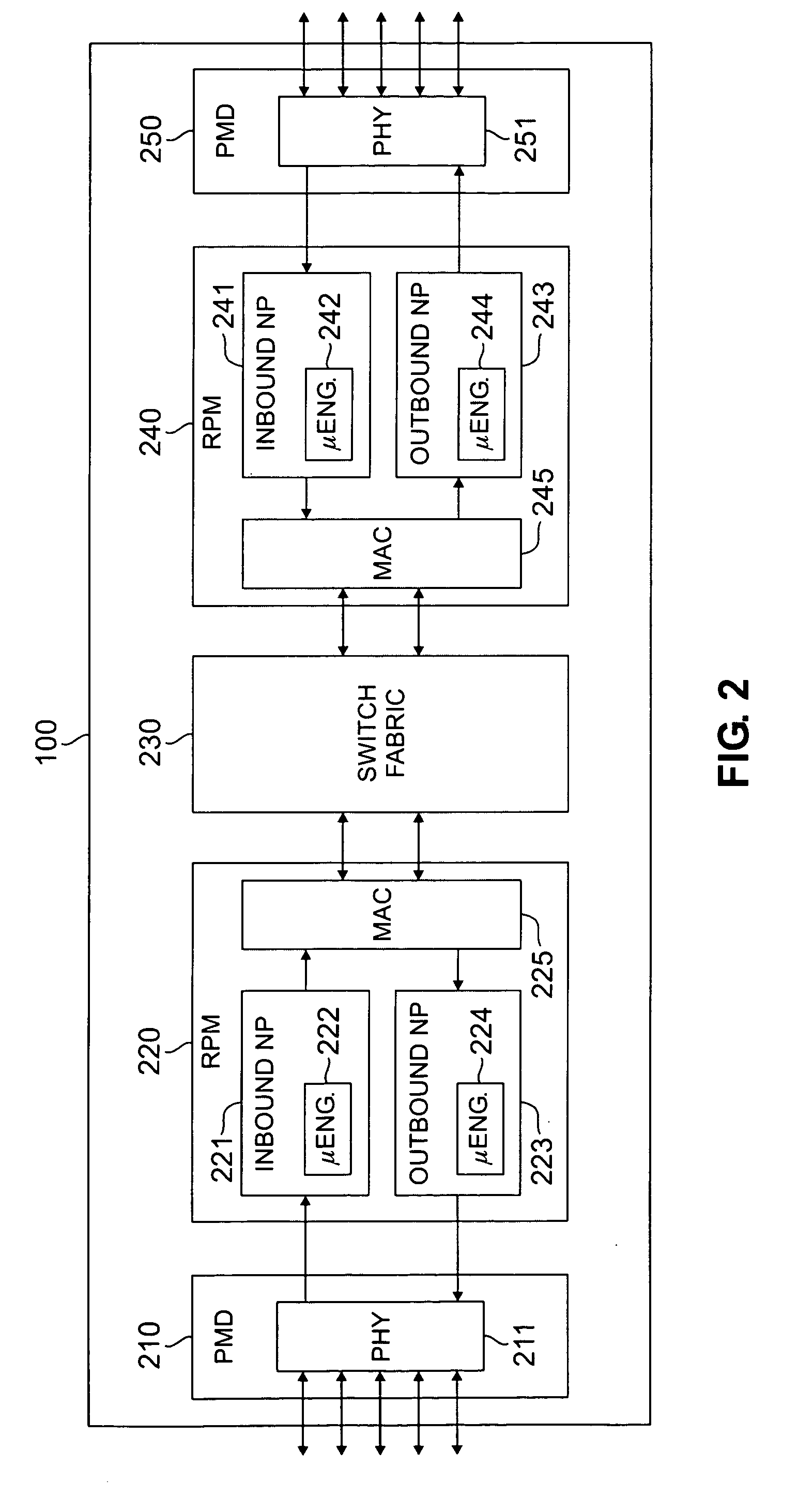Apparatus and method for searching trie trees using masks with non-symbol boundaries and flooding default routes in a massively parallel router
a massive parallel router and mask technology, applied in the direction of electrical apparatus, digital transmission, data switching networks, etc., can solve the problems of inability to handle line rate forwarding for high bandwidth links such as 10 gbps interfaces, outpacing the processing capacity of conventional routers, and small chances of successfully routing packets, so as to achieve no adverse effect and efficient flood
- Summary
- Abstract
- Description
- Claims
- Application Information
AI Technical Summary
Benefits of technology
Problems solved by technology
Method used
Image
Examples
Embodiment Construction
[0027]FIGS. 1 through 6, discussed below, and the various embodiments used to describe the principles of the present invention in this patent document are by way of illustration only and should not be construed in any way to limit the scope of the invention. Those skilled in the art will understand that the principles of the present invention may be implemented in any suitably arranged packet switch or router.
[0028]FIG. 1 illustrates exemplary distributed architecture router 100, which summarizes and distributes route information across plurality of routing nodes according to the principles of the present invention. Router 100 supports Layer 2 switching and Layer 3 switching and routing. Thus, router 100 functions as both a switch and a router. However, for simplicity, router 100 is referred to herein simply as a router. The switch operations are implied.
[0029] According to the exemplary embodiment, router 100 comprises N rack-mounted shelves, including exemplary shelves 110, 120 ...
PUM
 Login to View More
Login to View More Abstract
Description
Claims
Application Information
 Login to View More
Login to View More - R&D
- Intellectual Property
- Life Sciences
- Materials
- Tech Scout
- Unparalleled Data Quality
- Higher Quality Content
- 60% Fewer Hallucinations
Browse by: Latest US Patents, China's latest patents, Technical Efficacy Thesaurus, Application Domain, Technology Topic, Popular Technical Reports.
© 2025 PatSnap. All rights reserved.Legal|Privacy policy|Modern Slavery Act Transparency Statement|Sitemap|About US| Contact US: help@patsnap.com



